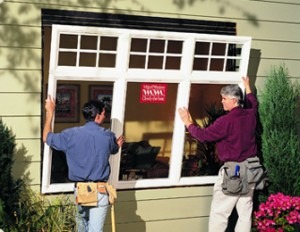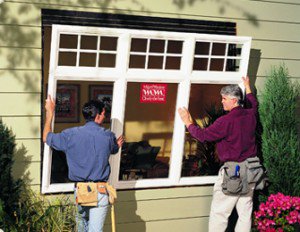


Years ago, almost all windows were framed in wood because wood was readily available, inexpensive, and easy to work with. Of course, wood windows need to be painted to prevent them from deteriorating, and up until 1978, most of the paint used on windows contained lead. Lead brightened the pigment and made the paint more durable. Unfortunately, lead paint has since been found to be unsafe and was banned in 1978. If you still have lead-painted windows in your Dayton home, it’s a good idea to have them replaced. Read on for a closer look at this issue and how to proceed with safety in mind.
Why Is Lead Paint so Risky?
Lead-based paint has been banned in the United States since 1978, but homes built before that can still contain lead-based paints. Ingesting or inhaling too much lead can lead to lead poisoning, a condition that causes symptoms from headaches, to memory problems, to tinging in the hands and feet. Children are at an increased risk for lead poisoning because they are more likely to put items in their mouth. For example, if you have lead paint around your windows and the pain begins to chip, your child may find the chips on the floor and ingest them. Even if your child does not purposefully ingest the paint chips, small chips of lead paint may end up on toys or snacks that your child puts in their mouth. Lead dust can also contaminate your home’s air and/or water.
Lead paint on window frames is particularly risky because wood windows are prone to deterioration and decay. They’re exposed to frequent changes in temperature and humidity, which causes the wood to warp and the paint to chip away. Plus, window sills tend to be within the reach of small children. They may use the sill to balance themselves as they walk, picking up lead paint as they do so.
How Can You Tell if You Have Lead Paint on Your Windows?
If your home was built before 1978 and the windows are original to the home, there’s a good chance they have lead paint. The paint may have been painted over with lead-free paint since then, but since this layer of paint can still chip away, painting over lead-painted windows does not necessarily make them safe.
How Can You Ensure Safety When Replacing Lead-Painted Windows?
When replacing windows that have been painted with lead, it’s important to keep safety in the forefront. If the existing windows are not very carefully removed, lead dust could be scattered throughout the home, putting the whole family at risk. The best way to ensure safety is to hire a window replacement team that is Lead-Safe Certified by the EPA. This ensures the contractors know how to remove and replace the windows without contaminating the surrounding area.
When replacing windows thought to contain lead, keep in mind that you must opt for a full window replacement. Replace not only the window sashes, but also the frame, since the frame is generally painted with lead-based paint. Replacement windows made with Fibrex® composite are a safe choice and are more durable than those made from vinyl. They can be made to look very similar to your Dayton home’s original wood windows, but with far less risk.
Leaving windows painted with lead-based paint in your home is not safe, especially if the paint has begun to chip or deteriorate. Renewal by Andersen’s window replacement technicians are Lead-Safe Certified and ready to help. Contact us to schedule a free consultation in your Dayton home.